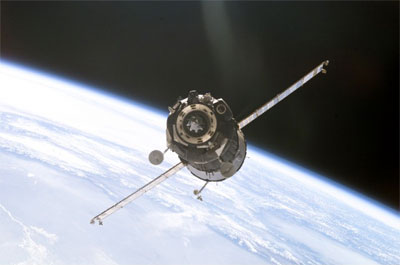INA: on its way out?by Taylor Dinerman
|
| INA can almost be said to have undermined its goals right from the start. |
Passed by Congress in 2000, this legislation aimed to prevent Iran for acquiring “Nuclear Related Dual-use Equipment Materiel and Related Technology”, items covered by the Missile Technology Control Regime, “items and substances relating to biological and chemical weapons”, and other stuff that should, as a matter of course, be denied to any vicious dictatorship, religious or otherwise. The main thrust of the legislation was to leverage the US-Russian relationship inside the International Space Station (ISS) partnership to convince the Russian to stop supporting Iran’s various weapons programs. It was narrowly drawn so as to allow the Pentagon to continue its joint threat reduction effort (the Nunn-Lugar program) and to buy the RD-180 rocket engines for the Atlas 5 launcher. It can almost be said to have undermined its goals right from the start.
At the time it was passed, NASA and the rest of the US government were confident that they had put the shuttle’s safety problems, revealed by the post-Challenger disaster investigations, behind them. The shuttle was flying three to as many as six missions a year and it looked as if the ISS assembly was going to be restricted more by budget problems than by technical ones. The Columbia disaster of February 2003 destroyed that complacency for good. Since then we have almost entirely depended on Russia to maintain ISS operations. Even if the shuttle flies all the missions currently planned there will still be a need to have Russian lifeboat Soyuz capsules attached to the ISS until at least 2013 or 2014, when a possible version of the Crew Exploration Vehicle might be available for this role.
The US Congress has accepted that the INA has failed. Senator Richard Lugar’s bill (S.1713) suspending it and allowing NASA to make payments to Russia for ISS-related services passed the Senate by unanimous consent. In order to get this, the Senator made clear that the US will not be able to make any payments to the Russians after 2012. This timeframe will probably create problems in the future. In the space business very long lead times are almost inevitable and, if the CEV is delayed after 2011 or 2012, the US could again find itself on the verge of abandoning its presence on the ISS.
| Senator Lugar made clear that the US will not be able to make any payments to the Russians after 2012. This timeframe will probably create problems in the future. |
For now, the best hope for NASA and the Administration on Capitol Hill is that the Senate’s bill will be passed intact by the House. This would allow NASA to immediately begin working with the Russians on the future Soyuz missions and would give everyone some breathing space to consider what to do next. After the shuttle has resumed assembly flights to the ISS there will be time for Mike Griffin and his superiors in the White House and Congress to work out exactly what they want NASA to do after 2012.
Preventing the proliferation of nuclear weapons is a urgent and, ultimately, probably impossible task: some day they will be used again. Postponing that day is the one of the most difficult and rewarding jobs the US has taken on. The INA was a flawed but noble attempt to convince the Russians that a nuclear Iran is not in their interest. If they cannot see that now, then it is useless to belabor the point. In the future there will be other opportunities for the government in Moscow to discover the danger that the Tehran regime represents to them.
As for the ISS, if the changes in the INA are passed by the House, NASA will then be able to negotiate a new agreement with the Russians to buy seats for US astronauts on pre-2012 Soyuz missions. The best deal would probably be a long-term one that would give the US a volume discount; in return the Russians would get a steady stream of dollars. If the Russians choose they could make these negotiations very difficult, but if they approach them on a businesslike basis they will be investing in future goodwill that will payoff handsomely in future commercial deals for cargo delivery services beyond low Earth orbit.
